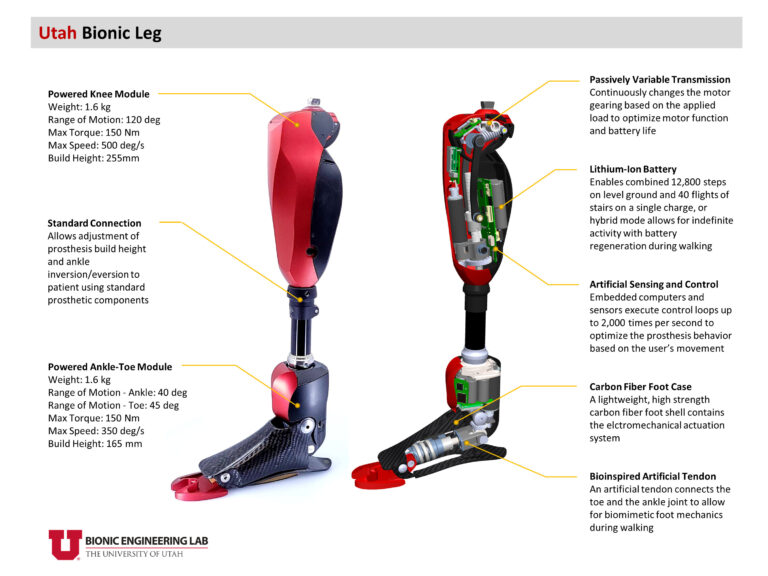
Robohub.org
The Utah Bionic Leg: A motorized prosthetic for lower-limb amputees

The Utah Bionic Leg is a motorized prosthetic for lower-limb amputees developed by University of Utah mechanical engineering associate professor Tommaso Lenzi and his students in the HGN Lab.
Lenzi’s Utah Bionic Leg uses motors, processors, and advanced artificial intelligence that all work together to give amputees more power to walk, stand-up, sit-down, and ascend and descend stairs and ramps. The extra power from the prosthesis makes these activities easier and less stressful for amputees, who normally need to over-use their upper body and intact leg to compensate for the lack of assistance from their prescribed prosthetics. The Utah Bionic Leg will help people with amputations, particularly elderly individuals, to walk much longer and attain new levels of mobility.
“If you walk faster, it will walk faster for you and give you more energy. Or it adapts automatically to the height of the steps in a staircase. Or it can help you cross over obstacles,” Lenzi says.
The Utah Bionic Leg uses custom-designed force and torque sensors as well as accelerometers and gyroscopes to help determine the leg’s position in space. Those sensors are connected to a computer processor that translates the sensor inputs into movements of the prosthetic joints. Based on that real-time data, the leg provides power to the motors in the joints to assist in walking, standing up, walking up and down stairs, or maneuvering around obstacles. The leg’s “smart transmission system” connects the electrical motors to the robotic joints of the prosthetic. This optimized system automatically adapts the joint behaviors for each activity, like shifting gears on a bike.
Finally, in addition to the robotic knee joint and robotic ankle joint, the Utah Bionic Leg has a robotic toe joint to provide more stability and comfort while walking. The sensors, processors, motors, transmission system, and robotic joints enable users to control the prosthetic intuitively and continuously, as if it was an intact biological leg.
Details of the leg’s newest technologies are described in a paper published in the journal. The paper was authored by University of Utah mechanical engineering graduate students Minh Tran, Lukas Grabert, Sarah Hood and Lenzi. You can read the paper here.
Lenzi and the university recently forged a new partnership with the worldwide leader in the prosthetics industry, Ottobock, to license the technology behind the Utah Bionic Leg and bring it to individuals with lower-limb amputations.
This article was originally published here.
tags: c-Health-Medicine



